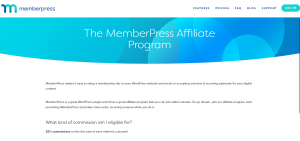The Truth About Segmentation
The history of marketing can be seen as an ever-increasing sophistication when it comes to segmentation and targeting.
Taking it back to some time around 4,000 BC when cuneiform tablets were all the rage, I suspect it was very much a one-size-fits-all sort of market. Step forward about 5,000 years and when it came to acquiring a Bible, you could choose any color, as long as it was painstakingly illustrated in gold leaf by monks on a windswept island off the Irish or Scottish coast.
But as time has passed, marketers began to understand that products appeal to consumers in different ways through different demographic groups. When we entered the golden age of print and television advertising, starting in the mid-19th century until late 20th century, we entered an era in which audiences began to associate with brands, and marketers saw a way to insert tailored messages into adverts or any available channel.
At this point, the marketing industry was highly channel-focused and strategy consisted of an attempt to “map” audiences to brands by way of broad messaging. In effect, the logic was “I believe that quite a lot of people who fit the demographic of what my target customer looks like read this newspaper or watch this TV program, and therefore I should try to speak to them there.” Fine as far as it went, but a long way from the type of sophistication we see today.
The Rise Of Digital
Of course, the key change between then and now has been the migration of customer interactions to the digital environment. For brands and other large organizations, this has pronounced one key benefit. The ability to record not just who individual users are, but also how they behave, and how they have behaved over time.
This change heralded what we might call “modern segmentation.” Marketers, and particularly digital marketers, are now able to build sophisticated segments and audiences based on behavior. For example, using specific segments like “all customers who have bought at least two books by Dan Brown in the past two years and have never bought a book by Clive Cussler” power cross-sell campaigns that attempt to steer consumers towards other products they might enjoy.
As more and more data becomes available, and digital marketing platforms become more sophisticated, we approach the mythical “segment of one.” What used to be a nice idea but impossible to implement is suddenly a reality: with triggered campaigns and dynamic content engines, no campaign need be exactly identical for more than one person.
The Rise Of Environment, Hello Mobile
A moment’s reflection tells us that our wants, needs and desires in the moment aren’t solely due to who we are or what we have done in the past. They are also influenced by our environment. To put it another way, nobody wants an umbrella on a sunny day, and everyone wants one when it’s raining.
The given environment the customer is in matters when it comes to effective communication. The rise of the smartphone has enabled information on environment to be added to the formulas of segmentation and targeting. Proximity, location, weather, local events etc. — all these things can have an influence on whether a campaign will “land” or not.
Meanwhile, as helpful as the smartphone may be, its “always on” nature means marketers and communicators need to be particularly careful when it comes to the campaigns they send. Relevance and helpfulness (as opposed to irrelevance and irritation) are more important than ever before.
All these trends drive marketing (and “interactions” in the broader sense) towards the same conclusions: in-the-moment 1-2-1 communication based on a complete understanding of each user, their behavior, and their environment. What was once an idea of marketing science fiction is very quickly becoming a reality.
The real truth about segmentation? It’s over. The old ways of building large segments of customers or prospects, aggregating them into static groups based on basic demographics are no more. In the always-on, digital mobile landscape, that approach is counterintuitive to marketing success as customers don’t react well to campaigns delivered using that logic. That’s not to say that target audiences for specific communications can’t be created in the moment — just that the notion of the persistent “segment” is no longer as powerful as it once was.
(30)
Report Post




